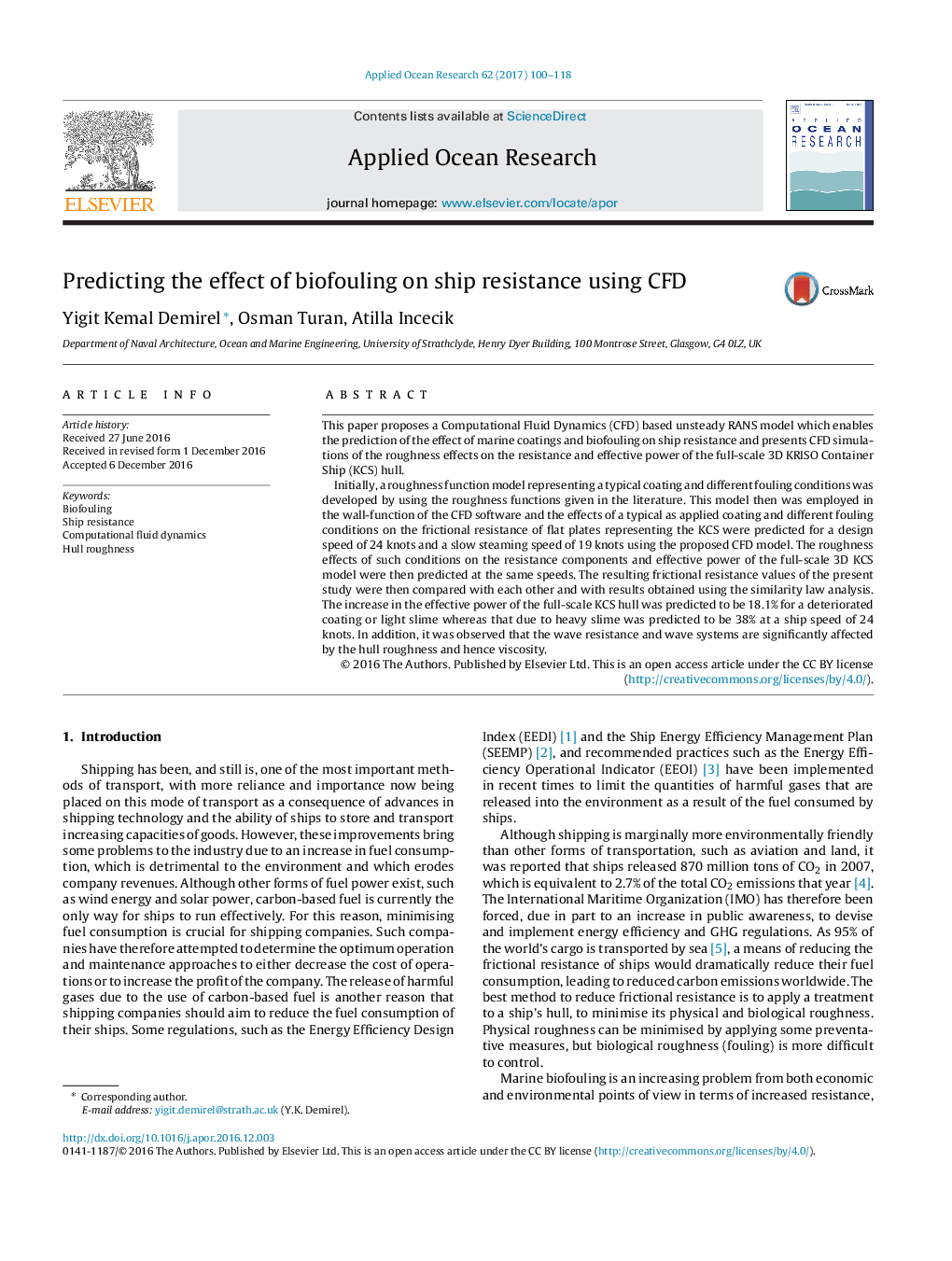| Article ID | Journal | Published Year | Pages | File Type |
|---|---|---|---|---|
| 5473235 | Applied Ocean Research | 2017 | 19 Pages |
Abstract
Initially, a roughness function model representing a typical coating and different fouling conditions was developed by using the roughness functions given in the literature. This model then was employed in the wall-function of the CFD software and the effects of a typical as applied coating and different fouling conditions on the frictional resistance of flat plates representing the KCS were predicted for a design speed of 24 knots and a slow steaming speed of 19 knots using the proposed CFD model. The roughness effects of such conditions on the resistance components and effective power of the full-scale 3D KCS model were then predicted at the same speeds. The resulting frictional resistance values of the present study were then compared with each other and with results obtained using the similarity law analysis. The increase in the effective power of the full-scale KCS hull was predicted to be 18.1% for a deteriorated coating or light slime whereas that due to heavy slime was predicted to be 38% at a ship speed of 24 knots. In addition, it was observed that the wave resistance and wave systems are significantly affected by the hull roughness and hence viscosity.
Related Topics
Physical Sciences and Engineering
Engineering
Ocean Engineering
Authors
Yigit Kemal Demirel, Osman Turan, Atilla Incecik,
